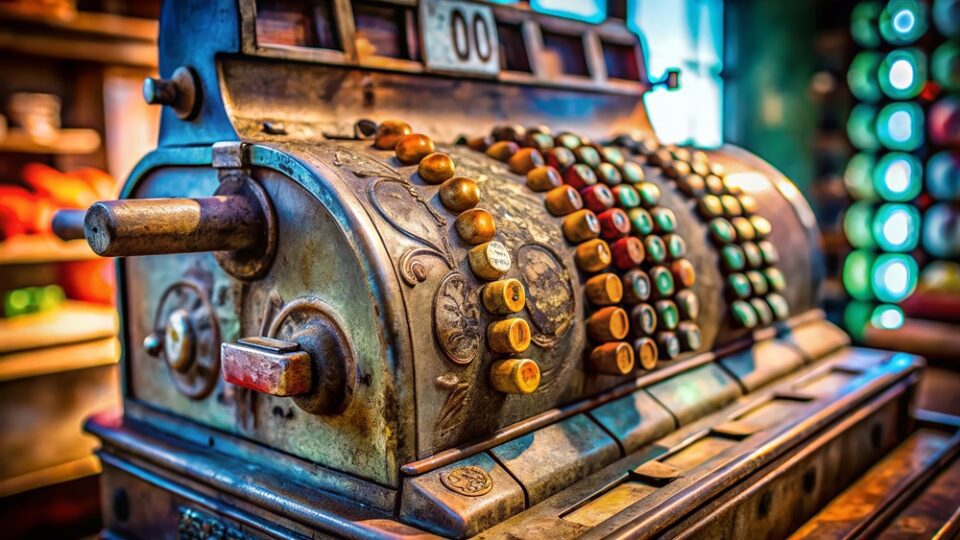The basic service that a point-of-sale (POS) device provides — checking out customers — is essential to any retailer’s functioning. However, the POS itself — the software, connections to other retail systems and the increasingly varied hardware — has become a less prominent part of the merchant’s tech stack. That’s partly due to the move toward cloud-based solutions, which “enable a consistency and scalability, and more cost-effective use of resources to make things happen in the store,” said Lee Holman, Lead Retail Analyst at IHL Group in an interview with Retail TouchPoints.
Holman, who has been studying the POS market for decades, shared his insights into the current state of POS technology, as well as which retailers will be best positioned to leverage AI to enhance the POS going forward.
Retail TouchPoints (RTP): What have been some of the most significant changes in the role of the POS since computerized (i.e. non-mechanical) systems were introduced in retail?
Lee Holman: First, full disclosure: my first foray into retail was in the early 1980s, working at a People’s Drugstore in White Oak, Md. The POS was a mechanical cash register that weighed around 200 pounds, and it was the highest-tech thing in the store. This was also a time when Sears and Kmart were the world’s top two retailers, and they, along with JCPenney and Montgomery Ward, all had catalogs that contribute 8% to 10% of their total revenue. What this meant was that [as far as the consumer was concerned], it was OK to be in a store and not find something that was in the catalog.
Advertisement
Back then, the POS was the centerpiece of any store, its heartbeat and central brain, and that’s because it was the one time when consumers interacted with any technology at all. That’s not the case anymore. They’re interacting with the website and their mobile devices; we’re seeing tech on the shelves, cameras in the ceilings and endcaps with digital displays. The POS is still central to everything that’s going on in the store, but it’s no longer the soul of it.
RTP: What’s been the impact of the growth of cloud-based solutions and edge computing?
Holman: [Growth in the use of cloud] has made retailers and tech providers focus on POS software. POS hardware is no longer the prime focus for retailers, but it’s still present and necessary, because it’s the place where most payment happens and where the most data is collected.
Also, something happening now that’s not getting much buzz is that as retailers embrace the idea of using edge technology in their stores, the POS hardware that they currently have installed can stay there for a while longer — longer than the POS vendor might want. It’s a retailer opportunity [to extend hardware lifecycles], because the processing is being done at the edge — not within the device, but locally at the store.
The scalability and data security that cloud solutions support also is really important. Say you are a small retailer with fewer than five locations, but you’re growing. If you have a cloud-based POS, the solution gets updated regularly. You don’t have to do anything except pay the subscription; you don’t even have to tweak the settings.
RTP: What kind of prospects do you see for the growth of mobile POS devices and solutions?
Holman: When mobile POS first reared its head, there was a lot of conversation about it: will it replace all the traditional POS stations? Some retailers made claims that they wouldn’t have any traditional POS stations. However, mobile POS has become something that’s in addition to, not a complete replacement for, [stationary POS]. Even so, I believe we’ll continue to see the growth of this technology.
Retailers are using mobile POS for things like sidewalk sales, as well as for greater convenience. Take a Midas or a Jiffy Lube. Now that some cars have [readable barcodes] that contain all the information about that vehicle, including maintenance visits, associates at these places can use [mobile POS] technology when a customer checks in — whether it’s for the first time or the 50th time — meaning that essentially, the whole transaction can happen on the tablet [the associate is using].
Another example: I’m an unabashed fan of the Scan & Go feature at Sam’s Club, which allows me to scan all the stuff in my basket and completely bypass the regular checkout. Now you push the cart through an arch [equipped with readers], which confirms what’s on my phone. So from the customer’s standpoint, they don’t interact at all with the retailer’s [physical] POS.
RTP: Will the continuing growth of AI make it become a bigger part of POS operations?
Holman: AI will definitely be a growth area. IHL did a big study and identified the retailers that will do the best with AI, because they’ve already done the “blocking and tackling” with their data. As more retailers clean up their data and have a rational sense of how they can apply AI, more of that will be touching the POS.
RTP: If the POS has to some extent been supplanted as the key store technology, what has taken its place?
Holman: Order management systems are now the thing that ties all the interoperability together [for both online and in-store sales]. If you have one version of the truth for an order — covering the product itself, its pricing, its source and location, etc. — then you avoid all the silo stuff that we were dealing with in the 1990s. At that time, when retailers built a website, they didn’t think about integrating any new technology with their legacy solutions, but going forward, those kinds of things will be the main points of concern for retailers.
The evolution of the POS is ongoing, and it has to do with the fact that retail is changing so drastically from what it was 30 to 40 years ago. Then, the POS was very centralized in the store, but with the advent of edge computing, beacons, and mobile POS and mobile devices, it’s almost as if the POS is dispersed throughout the store. It’s certainly decentralized from a hardware standpoint. Retailers’ focus going forward will be much more on the software than the hardware, unless some technological development occurs that nobody has seen yet.















